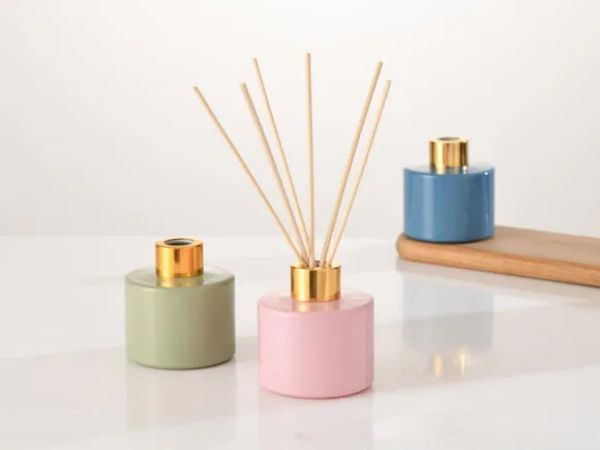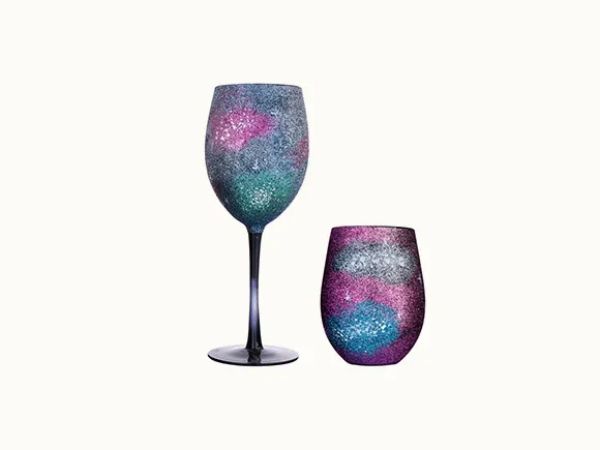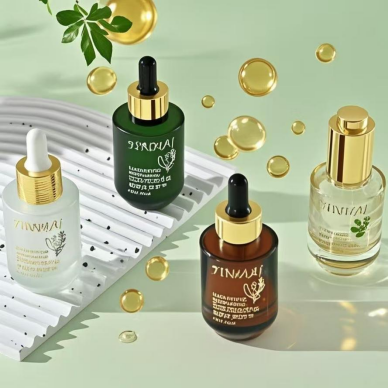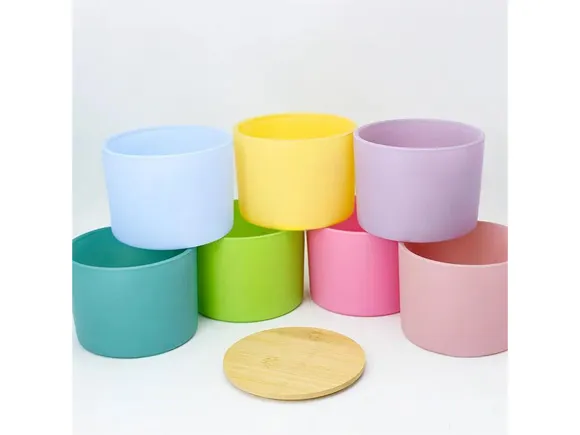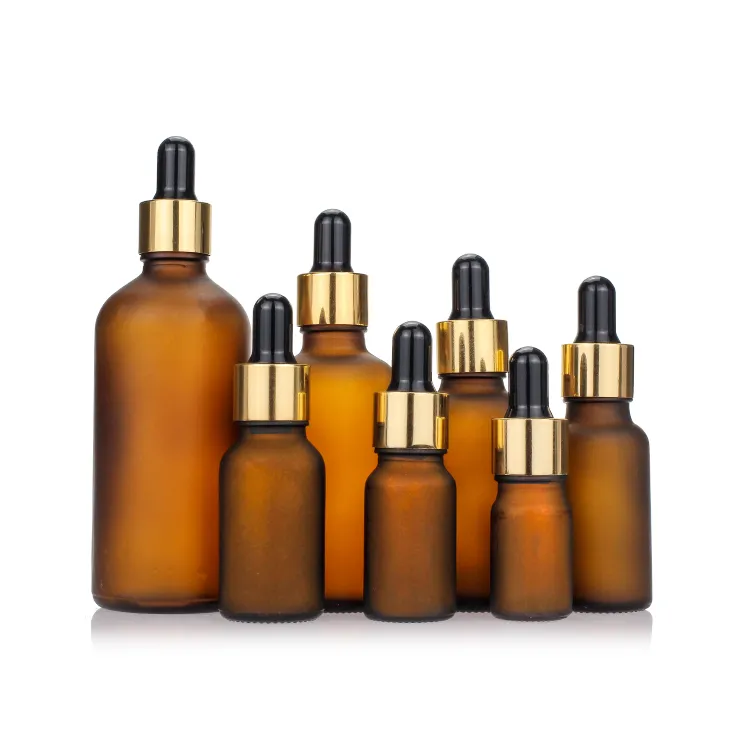In the dairy industry and household kitchens worldwide, the packaging choice between glass and plastic milk bottles remains a key consideration with implications for product quality, safety, environmental impact, and consumer experience. Both materials have distinct advantages and limitations. However, when it comes to preserving milk’s freshness, ensuring safety, and aligning with sustainability goals,glass milk bottlesoften emerge as the superior choice.
At Paupacking, we specialize in premiumGlass Milk Bottlesthat combine durability, safety, and elegance, designed to meet the rigorous demands of modern dairy packaging. This article provides an in-depth, comprehensive comparison of glass and plastic milk bottles, enriched with scientific insights, practical considerations, and market trends, helping producers and consumers make informed packaging decisions.


1. Material Safety and Chemical Stability
Glass Milk Bottles: Inert and Non-Toxic
Safety is paramount in milk packaging, as milk is highly perishable and sensitive to contamination. Glass milk bottles are made from inert materials that do not chemically interact with milk. This means they do not leach any substances into the milk, preserving its purity and natural flavor. Glass is free from harmful additives such as BPA, phthalates, or plasticizers, which are sometimes present in plastics and can migrate into food, especially under heat or prolonged storage.
The inertness of glass ensures that milk retains its original taste and nutritional qualities without risk of contamination. This is particularly important for infant formula, organic milk, and premium dairy products where consumers demand the highest safety standards.
Plastic Milk Bottles: Potential Chemical Risks
Plastic milk bottles, while often BPA-free nowadays, may still contain other additives or stabilizers that can degrade over time or under certain conditions such as heat, UV exposure, or acidity. These chemicals can migrate into milk, potentially affecting safety and flavor. Furthermore, plastic can release microplastics or other compounds during long-term storage or repeated use.
Paupacking’s Advantage
Paupacking’s food-gradeGlass Milk Bottlesguarantee chemical stability and safety, ensuring milk remains uncontaminated throughout its shelf life. Our glass bottles provide peace of mind for producers and consumers prioritizing health and purity.


2. Preservation of Freshness and Flavor
Glass Bottles: Superior Barrier Properties
Milk’s freshness and flavor depend heavily on protection from oxygen and environmental contaminants. Glass bottles provide an impermeable barrier that prevents oxygen from penetrating, which slows oxidation and spoilage. This airtight environment helps maintain milk’s natural taste, aroma, and nutritional components for longer.
Glass also prevents absorption of external odors or flavors, keeping milk pure and uncontaminated.
Plastic Bottles: Semi-Permeable and Odor-Prone
Plastic bottles are semi-permeable, allowing some oxygen transfer that accelerates milk spoilage and flavor degradation. Plastic may absorb odors from the environment or previous contents, potentially altering milk flavor. Over time, plastic can develop micro-cracks or scratches that harbor bacteria or contaminants, further compromising milk quality.
Paupacking’s Glass Milk Bottles
Paupacking’sGlass Milk Bottlesmaintain freshness by providing an airtight, odor-free environment. Our bottles minimize oxygen exposure and prevent flavor degradation, ensuring every pour delivers the intended taste experience.


3. Environmental Impact and Sustainability
Glass: 100% Recyclable and Reusable
Glass is fully recyclable without loss of quality or purity. Recycling glass reduces raw material extraction and energy consumption compared to producing new glass. Glass bottles can also be reused multiple times, reducing waste and supporting a circular economy.
Plastic: Lower Recycling Rates and Pollution Concerns
Plastic bottles, while recyclable, degrade in quality after recycling and have lower recycling rates globally. Plastic waste contributes significantly to environmental pollution, including microplastics in oceans and ecosystems. Most plastic packaging is single-use and often ends up in landfills or the environment.
Paupacking’s Commitment
By choosing Paupacking’s eco-friendlyGlass Milk Bottles, brands reduce plastic pollution and support sustainable packaging initiatives. Our bottles are designed with high recycled content and full recyclability in mind.
4. Durability and Reusability
Stainless Glass: Durable and Reusable
Glass bottles, though fragile, are highly durable when handled properly. They can be reused multiple times without degradation, making them ideal for refillable milk systems. Reusability reduces packaging waste and raw material consumption.
Plastic: Prone to Wear and Limited Reuse
Plastic bottles tend to scratch, cloud, and become brittle after repeated use, limiting their lifespan and reuse potential. Plastic degradation can also increase microplastic shedding and contamination risks.
Paupacking’s Durable Glass Bottles
Paupacking’s sturdyGlass Milk Bottlesare designed for longevity and repeated use, making them a smart investment for sustainable dairy packaging.
5. Temperature Resistance
Glass: Heat and Cold Resistant
Glass bottles withstand temperature fluctuations better than plastic, making them suitable for refrigeration and pasteurization processes. Glass can endure repeated heating and cooling cycles without warping or releasing harmful substances.
Plastic: Heat Sensitive
Plastic bottles can deform or degrade when exposed to heat, limiting their use in certain dairy processing steps. Heat exposure also increases the risk of chemical migration from plastic into milk.
Paupacking’s Heat-Resistant Glass
Paupacking’sGlass Milk Bottlesare manufactured to endure typical dairy processing temperatures without compromising integrity.
6. Consumer Perception and Premium Appeal
Glass: Premium and Authentic
Glass milk bottles convey a premium, authentic image. The weight, clarity, and tactile feel of glass enhance brand perception and consumer trust. Glass packaging is often associated with freshness, purity, and quality.
Plastic: Convenient but Less Premium
Plastic bottles are convenient and lightweight but often perceived as less premium, which can affect consumer willingness to pay higher prices.
Paupacking’s Customizable Glass Bottles
Paupacking offers customizableGlass Milk Bottlesthat help brands elevate their market positioning through unique shapes, embossing, and finishes.
7. Transparency and Product Visibility
Glass: Clear and Visible
Glass bottles provide crystal-clear visibility of milk, allowing consumers to inspect freshness and quality visually. This transparency builds consumer confidence and supports informed purchasing decisions.
Plastic: Often Opaque or Cloudy
Plastic bottles may be opaque or discolored, reducing visibility and consumer trust.
Paupacking’s Clear Glass Bottles
Paupacking’s clearGlass Milk Bottlesenhance product visibility and shelf appeal.
8. Hygiene and Cleanability
Glass: Non-Porous and Easy to Sterilize
Glass is non-porous and easy to sterilize, reducing bacterial contamination risks. It can be cleaned thoroughly with hot water, detergents, or sterilization methods without damage.
Plastic: Micro-Scratch Prone
Plastic surfaces can develop micro-scratches that harbor bacteria, complicating cleaning and hygiene.
Paupacking’s Hygienic Glass Bottles
Paupacking’sGlass Milk Bottlessupport high hygiene standards essential for dairy safety.
9. Weight and Handling Considerations
Plastic: Lightweight and Easy to Handle
Plastic bottles are lightweight and easier to handle, which can be advantageous for transport and consumer convenience.
Glass: Heavier and Fragile
Glass bottles are heavier, which may increase transportation costs and require careful handling to prevent breakage.
Paupacking’s Optimized Glass Bottles
Paupacking designsGlass Milk Bottleswith optimized weight-to-strength ratios to balance durability and practicality.
10. Cost Implications and Lifecycle Value
Plastic: Lower Upfront Cost
Plastic bottles generally have lower upfront costs but may incur higher long-term expenses due to limited reuse and environmental fees.
Glass: Higher Initial Cost but Better Lifecycle Value
Glass bottles have higher initial costs but offer better lifecycle value through reusability, recyclability, and brand premiumization.
Paupacking’s Cost-Effective Glass Solutions
Paupacking’sGlass Milk Bottlesprovide cost-effective solutions for brands prioritizing sustainability and quality.
Summary Table: Glass Milk Bottles vs Plastic Milk Bottles
| Feature | Glass Milk Bottle | Plastic Milk Bottle | Paupacking Advantage |
|---|---|---|---|
| Chemical Safety | Inert, no chemical leaching | Potential chemical migration | Food-grade, non-toxic glass |
| Freshness Preservation | Superior oxygen barrier, no odor absorption | Semi-permeable, odor and oxygen permeable | Airtight, impermeable glass |
| Environmental Impact | 100% recyclable, reusable | Lower recycling rates, microplastic pollution | Eco-friendly, sustainable glass |
| Durability & Reusability | Highly durable, multiple reuse cycles | Prone to scratches, limited reuse | Robust design for longevity |
| Temperature Resistance | Heat and cold resistant | Vulnerable to heat deformation | Heat-resistant glass |
| Consumer Perception | Premium, authentic, trusted | Convenient but less premium | Customizable, elegant glass |
| Transparency | Clear, allows visual quality check | Often opaque or cloudy | Crystal-clear glass |
| Hygiene | Non-porous, easy to sterilize | Micro-scratch prone | Smooth, sterilizable surface |
| Weight & Handling | Heavier, requires careful handling | Lightweight, easier transport | Optimized weight-strength balance |
| Cost | Higher upfront, better lifecycle value | Lower upfront, higher long-term costs | Cost-effective premium packaging |
Conclusion
Choosing between glass and plastic milk bottles involves balancing safety, quality, environmental impact, and practical considerations. Glass milk bottles excel in preserving milk’s freshness, ensuring chemical safety, supporting sustainability, and enhancing brand image. While plastic offers convenience and lower initial costs, its limitations in recyclability, chemical stability, and consumer perception are significant.
Paupacking’s premiumGlass Milk Bottlesprovide an ideal solution for dairy brands and consumers seeking the best in quality, safety, and sustainability. By choosing glass, you invest in packaging that protects your product, supports the environment, and elevates your brand.
Explore Paupacking’s collection today and discover how our glass milk bottles can transform your dairy packaging experience.





